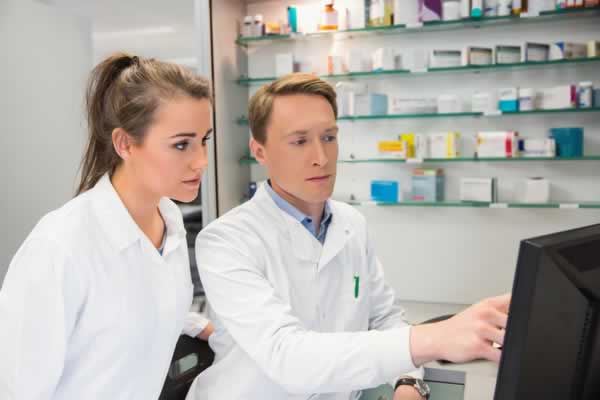Generic drugs play a crucial role in providing affordable healthcare options to millions of Americans. But how exactly does a generic drug make its way from concept to pharmacy shelves? Let’s dive into the intricate process of obtaining generic drug approval in the United States.
The Importance of Generic Drugs in Healthcare
Before we delve into the approval process, it’s essential to understand why generic drugs are so vital to our healthcare system. Generic medications are the unsung heroes of the pharmaceutical world, offering the same therapeutic benefits as their brand-name counterparts at a fraction of the cost.
“Generic drugs account for 89% of prescriptions dispensed in the United States but only 26% of total drug costs[1].”
This staggering statistic underscores the immense impact generic drugs have on making healthcare more accessible and affordable for millions of Americans. But how do these cost-effective alternatives make it to market? Let’s explore the journey.
The Generic Drug Approval Process: An Overview
Obtaining approval for a generic drug in the United States is no small feat. It’s a complex, multi-step process that requires rigorous testing, extensive documentation, and careful adherence to FDA regulations. Let’s break it down step by step.
1. Pre-Application Research and Development
Before a company can even think about submitting an application, they must first invest significant time and resources into research and development. This phase involves:
- Identifying a suitable brand-name drug to replicate
- Developing a bioequivalent formulation
- Conducting preliminary studies to ensure safety and efficacy
2. Abbreviated New Drug Application (ANDA) Submission
Once the groundwork is laid, the company must submit an Abbreviated New Drug Application (ANDA) to the FDA. This comprehensive document includes:
- Detailed information about the drug’s composition
- Manufacturing processes and quality control measures
- Results of bioequivalence studies
- Proposed labeling
3. FDA Review Process
After submission, the FDA begins its thorough review of the ANDA. This process typically involves:
- Scientific evaluation of the drug’s formulation
- Assessment of bioequivalence data
- Inspection of manufacturing facilities
- Review of proposed labeling
4. Addressing FDA Queries and Concerns
During the review process, the FDA may raise questions or concerns about various aspects of the application. The company must promptly address these issues, which may involve:
- Providing additional data or clarification
- Conducting further studies
- Making adjustments to manufacturing processes or labeling
5. Final Approval and Market Launch
If all goes well and the FDA is satisfied with the application and the company’s responses to any queries, the generic drug receives approval. At this point, the company can begin manufacturing and marketing the drug.
Key Considerations in the Generic Drug Approval Process
While the steps outlined above provide a general roadmap, there are several key factors that can significantly impact the approval process. Let’s explore these in more detail.
Bioequivalence: The Cornerstone of Generic Drug Approval
At the heart of the generic drug approval process lies the concept of bioequivalence. But what exactly does this mean?
“The FDA requires a generic-drug company to produce enough data to demonstrate that it can manufacture a drug that can be appropriately substituted for its brand-name counterpart[1].”
In essence, bioequivalence means that the generic drug must deliver the same amount of active ingredient to the bloodstream, at the same rate, as the brand-name drug. This ensures that the generic version will have the same therapeutic effect as its brand-name counterpart.
Demonstrating Bioequivalence
Proving bioequivalence typically involves:
- Conducting in vivo studies comparing the generic to the brand-name drug
- Analyzing blood samples to measure drug concentrations over time
- Performing statistical analyses to confirm that any differences fall within acceptable limits
It’s worth noting that demonstrating bioequivalence can be particularly challenging for certain types of drugs, such as those with complex delivery systems or narrow therapeutic windows.
Quality Control and Manufacturing Standards
The FDA places a strong emphasis on quality control and manufacturing standards in the generic drug approval process. Companies must demonstrate that they can consistently produce a high-quality product that meets all necessary specifications.
This involves:
- Implementing robust quality management systems
- Adhering to Good Manufacturing Practices (GMP)
- Conducting regular audits and inspections of manufacturing facilities
Dr. Janet Woodcock, Director of the FDA’s Center for Drug Evaluation and Research, emphasizes the importance of these standards:
“We hold generic drugs to the same quality and manufacturing standards as brand-name drugs. Patients can be confident in the quality of an FDA-approved generic drug.”
Patent and Exclusivity Considerations
One of the most complex aspects of the generic drug approval process is navigating the landscape of patents and exclusivity rights. Brand-name drugs are often protected by multiple patents and various forms of market exclusivity, which can delay the approval and launch of generic versions.
Generic drug companies must carefully time their ANDA submissions and may need to:
- Challenge existing patents through Paragraph IV certifications
- Wait for patents or exclusivity periods to expire
- Negotiate licensing agreements with brand-name manufacturers
Challenges in the Generic Drug Approval Process
While the generic drug approval process is designed to ensure the safety and efficacy of these medications, it’s not without its challenges. Let’s explore some of the hurdles that generic drug manufacturers often face.
Regulatory Hurdles and Delays
The FDA’s rigorous review process, while necessary, can sometimes lead to significant delays in generic drug approvals. These delays can be caused by:
- Backlogs in application reviews
- Requests for additional information or studies
- Compliance issues at manufacturing facilities
To address these challenges, the FDA has implemented various initiatives aimed at streamlining the approval process, such as the Generic Drug User Fee Amendments (GDUFA) program.
Complex Generics: A Special Case
Some drugs, known as “complex generics,” present unique challenges in the approval process. These may include:
- Drugs with complex active ingredients
- Products with complex formulations or dosage forms
- Drugs that are difficult to manufacture consistently
The FDA has recognized the need for special guidance in this area and has implemented programs to support the development and approval of complex generics.
Economic Challenges
While generic drugs offer significant cost savings to consumers, the companies developing them face their own economic challenges. These may include:
- High costs of research and development
- Intense competition in the generic drug market
- Pricing pressures from healthcare providers and insurers
Dr. Chip Davis, President and CEO of the Association for Accessible Medicines, notes:
“The generic drug industry operates on razor-thin margins. We need to ensure that the regulatory environment supports continued innovation and competition in this vital sector.”
The Future of Generic Drug Approval in the U.S.
As we look to the future, several trends and initiatives are likely to shape the landscape of generic drug approval in the United States.
Technological Advancements
Emerging technologies are poised to revolutionize various aspects of the generic drug approval process. These may include:
- Advanced analytics for faster and more accurate bioequivalence assessments
- Artificial intelligence to streamline application reviews
- Continuous manufacturing techniques for improved quality control
Regulatory Reforms
The FDA continues to explore ways to enhance and streamline the generic drug approval process. Some potential areas of focus include:
- Further refinement of the GDUFA program
- Development of new guidance for complex generics
- Increased international collaboration on generic drug approvals
Focus on Transparency and Patient Education
There’s a growing emphasis on improving transparency in the generic drug approval process and educating patients about the safety and efficacy of generic medications. This may involve:
- Enhanced public reporting on generic drug approvals
- Expanded patient education initiatives
- Increased collaboration with healthcare providers to promote generic drug use
Conclusion: The Path Forward for Generic Drug Approval
Obtaining generic drug approval in the United States is a complex, challenging, but ultimately rewarding process. As we’ve explored, it involves rigorous scientific testing, careful regulatory navigation, and significant investment of time and resources.
However, the benefits of this process are clear. Generic drugs play a crucial role in making healthcare more affordable and accessible to millions of Americans. As we move forward, continued innovation in both the scientific and regulatory realms will be key to ensuring a robust and efficient generic drug approval process.
By understanding this process and the challenges involved, stakeholders across the healthcare spectrum – from pharmaceutical companies to healthcare providers to patients – can work together to support the continued development and approval of high-quality, affordable generic medications.
Key Takeaways
- Generic drugs account for 89% of prescriptions in the U.S. but only 26% of drug costs.
- The generic drug approval process involves extensive research, rigorous testing, and careful regulatory compliance.
- Bioequivalence is a crucial concept in generic drug approval, ensuring that generic versions perform the same as brand-name drugs.
- Challenges in the approval process include regulatory hurdles, complex generics, and economic pressures.
- The future of generic drug approval may involve technological advancements, regulatory reforms, and increased focus on transparency and education.
FAQs
- How long does the generic drug approval process typically take?
The process can vary widely, but on average, it takes about 3-4 years from initial development to final approval. - Are generic drugs exactly the same as brand-name drugs?
While not identical, generic drugs must have the same active ingredient, strength, dosage form, and route of administration as the brand-name drug. - Why are some drugs more challenging to replicate as generics?
Some drugs, known as complex generics, may have complex active ingredients, formulations, or manufacturing processes that make them more difficult to replicate. - How does the FDA ensure the quality of generic drugs?
The FDA conducts thorough reviews of generic drug applications, inspects manufacturing facilities, and requires ongoing quality control measures. - Can a generic drug be approved before the brand-name drug’s patent expires?
In some cases, yes. Generic companies can challenge existing patents or negotiate licensing agreements to bring their products to market earlier.
Sources Cited:
- U.S. Pharmacist. “Parsing the Generic-Drug Approval Process.” 2018.
























